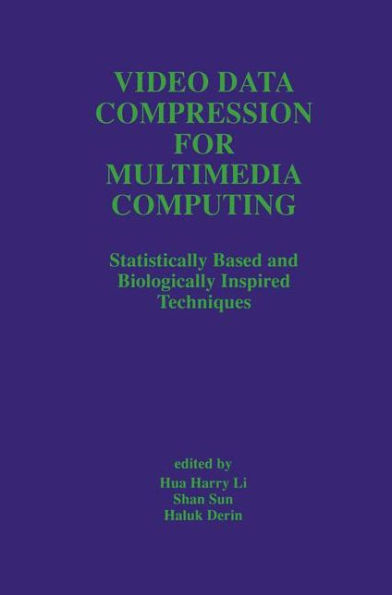Video Data Compression for Multimedia Computing: Statistically Based and Biologically Inspired Techniques
During the past few years, we have been witnessing the rapid growth of the applications of Interactive Digital Video, Multimedia Computing, Desktop Video Teleconferencing, Virtual Reality, and High Definition Television (HDTV). Another information revolution which is tied to Cyberspace is almost within reach. The information, data, text, graphics, video, sound, etc. , in the form of multimedia, can be requested, accessed, distributed, and transmitted to potentially every household. This is changing and will continue to change the way of people doing business, functioning in the society, and entertaining. In the foreseeable future, many personalized, portable information terminals, which can be carried while traveling, will provide the link to central computer network to allow information exchange including videos from a node to node, from a center to a node, or nodes. Facing this opportunity, the question is what are the major significant technical challenges that people have to solve to push the-state-of-the-art for the realization of the above mentioned technology advancement? From our professional judgement We feel that one of the major technical challenges is in Video Data Compression. Video communications in the form of desktop teleconferencing, videophone, network video delivery on demand, even games, are going to be major media traveling in the information super highway, hopping from one node in the Cyberspace to the other.
1113636331
Video Data Compression for Multimedia Computing: Statistically Based and Biologically Inspired Techniques
During the past few years, we have been witnessing the rapid growth of the applications of Interactive Digital Video, Multimedia Computing, Desktop Video Teleconferencing, Virtual Reality, and High Definition Television (HDTV). Another information revolution which is tied to Cyberspace is almost within reach. The information, data, text, graphics, video, sound, etc. , in the form of multimedia, can be requested, accessed, distributed, and transmitted to potentially every household. This is changing and will continue to change the way of people doing business, functioning in the society, and entertaining. In the foreseeable future, many personalized, portable information terminals, which can be carried while traveling, will provide the link to central computer network to allow information exchange including videos from a node to node, from a center to a node, or nodes. Facing this opportunity, the question is what are the major significant technical challenges that people have to solve to push the-state-of-the-art for the realization of the above mentioned technology advancement? From our professional judgement We feel that one of the major technical challenges is in Video Data Compression. Video communications in the form of desktop teleconferencing, videophone, network video delivery on demand, even games, are going to be major media traveling in the information super highway, hopping from one node in the Cyberspace to the other.
219.99
In Stock
5
1

Video Data Compression for Multimedia Computing: Statistically Based and Biologically Inspired Techniques
421
Video Data Compression for Multimedia Computing: Statistically Based and Biologically Inspired Techniques
421Paperback(Softcover reprint of the original 1st ed. 1997)
$219.99
219.99
In Stock

Product Details
| ISBN-13: | 9781461378624 |
|---|---|
| Publisher: | Springer US |
| Publication date: | 10/12/2012 |
| Series: | The Springer International Series in Engineering and Computer Science , #378 |
| Edition description: | Softcover reprint of the original 1st ed. 1997 |
| Pages: | 421 |
| Product dimensions: | 6.10(w) x 9.25(h) x 0.04(d) |
From the B&N Reads Blog
